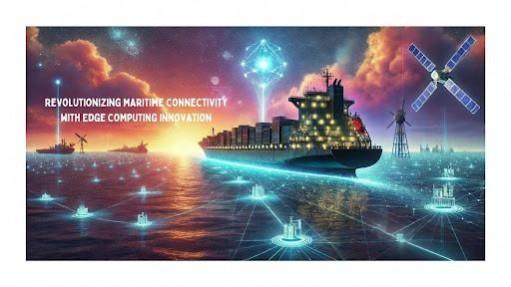
In this fast-growing digital world, Jayaram Bhogi has unveiled transformative insights into how edge computing is revolutionizing maritime connectivity. His research explores integrating agile methodologies with advanced technologies to overcome the complexities of cruise ship operations. By addressing challenges like high latency and bandwidth limitations, Bhogi's work highlights innovative strategies to enhance passenger experiences and operational efficiency, setting a new benchmark for digital transformation in the maritime industry.
Bridging the Digital Divide at Sea
Modern cruise ships operate in challenging environments with complex connectivity demands. Transitioning between near-shore cellular networks and satellite communication often results in inconsistent service quality. Traditional communication technologies struggle to meet passenger expectations for seamless digital services, especially on vessels accommodating thousands of people. The gap between onshore connectivity standards and maritime capabilities can be effectively closed by leveraging edge computing.
The Role of Edge Computing in Maritime Operations
Edge computing introduces localized data processing within the ship's infrastructure. This reduces latency, optimizes bandwidth usage, and maintains system performance even during satellite link disruptions. By employing distributed computing architectures, ships can process critical data onboard, reducing their reliance on high-latency cloud systems. This innovation improves passenger services and enables real-time monitoring and predictive maintenance, further enhancing operational efficiency.
Designing Resilient Maritime Systems
Deploying edge computing in maritime environments requires overcoming significant physical and technical challenges. Space, environmental conditions, and power availability constrain shipboard data centers. Edge systems must endure vibrations, high humidity, and temperature variations while maintaining robust performance. These constraints necessitate advanced engineering solutions, such as compact hardware designs and energy-efficient cooling systems, ensuring reliability in harsh conditions.
Agile Implementation for Seamless Integration
Adopting an agile approach is essential for integrating edge computing systems aboard cruise ships. Iterative sprint cycles, tailored to align with ship schedules, enable phased deployment with minimal operational disruption. This strategy allows developers to collect continuous feedback, refine processes, and ensure that improvements align with operational needs.
Moreover, combining traditional hardware installation with agile software development ensures ships can implement cutting-edge solutions while adhering to strict operational timelines. Staff training and risk mitigation frameworks further bolster the system's adaptability and reliability.
Measurable Benefits and Performance Gains
Edge computing solutions have yielded tangible benefits for cruise operations. Response times for passenger applications have dropped from seconds to milliseconds, ensuring smoother user experiences. Bandwidth usage has been optimized by up to 40%, reducing operational costs while maintaining high service quality. These improvements have also enhanced passenger satisfaction, with surveys reporting significant increases in digital service ratings.
Operational gains extend to cost savings and resource efficiency. By optimizing satellite link utilization, ships have reported a 25–35% reduction in communication expenses. These advancements deliver a compelling return on investment, typically achieved within two years of deployment.
Future Horizons for Maritime Edge Computing
As maritime technology continues to evolve, the integration of edge computing with artificial intelligence and advanced communication networks promises even more incredible advancements. Innovative ships with thousands of IoT sensors will utilize edge computing to enable real-time analytics and autonomous decision-making capabilities.
The convergence of 5G and low-earth orbit satellites is set to revolutionize maritime connectivity further. Hybrid networks combining terrestrial and satellite technologies will enhance throughput and reliability, supporting the next generation of digital services for passengers and crew alike.
In conclusion, Jayaram Bhogi's exploration of edge computing in cruise ship environments highlights a transformative shift in maritime connectivity. His work lays the groundwork for future innovations in digital maritime operations by combining agile methodologies with advanced computing architectures. As edge computing continues to evolve, it will enable operators to enhance service delivery and efficiency, paving the way for seamless navigation through the challenges of an increasingly digital world.








![Sky is the limit: IndiGo is now tenth largest airline by capacity globally; growth indisputable [details]](https://data1.ibtimes.co.in/en/full/767455/sky-limit-indigo-now-tenth-largest-airline-by-capacity-globally-growth-indisputable-details.jpg?w=220&h=138)








